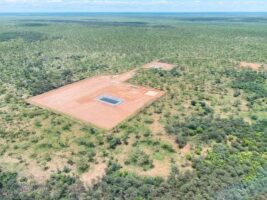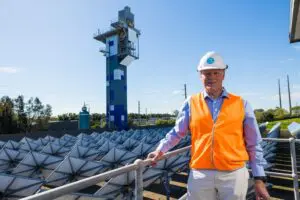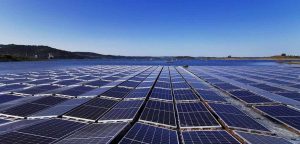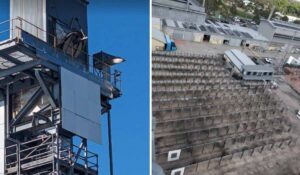Australian invented solar thermal technologies will be trialled as part of a US government funded demonstration project that is aiming to slash the costs of energy storage and the production of zero-emissions heat for industrial applications.
US-based research group Sandia Laboratories has secured US$25 million (A$33 million) from the US Department of Energy to construct a 1MW demonstration facility in New Mexico, with the ability to deliver more than six hours of stored high-temperature heat at temperatures above 700 degrees.
The project will deploy a “falling particle” technique for collecting high temperature heat from concentrating solar thermal plants developed by the CSIRO’s Australian Solar Thermal Research Institute (ASTRI), which is headquartered at the research institution’s Newcastle campus.
The demonstration project will test the technology for use in the production of high temperature heat for energy storage, power generation and industrial applications, such as minerals or chemical processing.
ASTRI had led the research and development of a “falling particle” technique, where a stream of small particles are heated by concentrated sunlight.
The technique allows for particles to be heated to temperatures well above 1,000 degrees Celsius, depending on the process used, providing a source of high temperature heat for industrial processes and for thermal energy storage. It allows renewable heat to be used as needed, potentially providing a 24-hour supply of zero emissions energy.
Australia’s involvement in the project also extends to research undertaken by the Australian National University and the University of Adelaide, which contributed to the development of the technology.
ANU researchers modelled the costs of the solar thermal technology, finding that it had the potential to deliver large-scale energy storage at less than US$60 per Megawatt-hour.
“This form of energy is not only inexpensive and clean; with its built-in low-cost storage, it can contribute greatly to the reliability of the renewable energy mix, and to facilitating the global transition from fossil fuels to 100 per cent renewable energy as mandated by the Paris Agreement,” ANU associate professor John Pye said.
“Interestingly, the heat-storing ceramic particles in this system were originally developed for use in unconventional natural gas fracking – they are cheap and strong as well as stable enough to withstand many cycles of intense heating and cooling.”
ASTRI Chief Technology Officer, Wes Stein, said that the research group was excited to see the technology deployed in a large-scale trial.
“We are delighted that our US colleagues have selected this technology as the pathway forward for [concentrating solar thermal] technology,” Stein said.
“We have been working closely with the US for several years on the next generation of CST technology and the US decision reflects our efforts and recognises Australian contributions to the development of this system.”
The technology has previously been trialled in a concentrating solar thermal demonstration facility built at the CSIRO’s Newcastle campus, which operates as one of Australia’s only high-temperature solar thermal research facility.
The ASTRI initiative is a $100 million collaboration between the CSIRO and a number of local and international collaborators and has been backed by $50 million in funding provided by the Australian Renewable Energy Agency.
Federal energy and emissions reduction minister Angus Taylor said the Sandia Laboratories led trial was a positive example of Australian research contributing to improved energy technologies.
“Australian research is opening up new ways to generate clean electricity and reducing emissions around the world,” Taylor said. “The technologies Australia is developing, and the Government is supporting, will deliver global benefits.”










